Looking for seriously fun science, technology, engineering, and maths news for your curious kids or tech-talented teens? We've got you covered! Inside every issue you'll find articles, activities, puzzles, comics, and prizes galore. Perfect reading for enquiring minds, CSIRO's Double Helix magazine is packed with news, features, fun experiments, giveaways and more. Each issue focuses on a different theme, from smells to spaceships and beyond! With clear language and eye-catching design, the content promotes critical thinking, strengthens literacy skills and is the perfect fuel to spark or sustain an interest in STEM. Double Helix is published eight times a year. It is ideal for 8 to 13-year-olds and enjoyed by older readers as well.
Double Helix
HELIX HQ
ON THE DOUBLE
DIAMONDS ARE FOR SENSORS • Quantum sensors use atoms and light to make extremely precise measurements of the world. CSIRO scientists are working on new quantum sensors – made from diamonds!
MAKING A MUMMY • Archaeologists have uncovered the long-lost recipes used by ancient Egyptians to mummify their dead.
CROC-SPEAK • It’s not easy studying the voices of Australian saltwater crocodiles. Sure, they’re dangerous, but it’s also very noisy underwater in the wild. Critters from frogs to fish have their say, and microphones record it all.
QUANTUM IN SPACE • NASA’s Cold Atom Lab arrived at the International Space Station (ISS) in 2018. Now, physicists are using it to study quantum mechanics without the interference of gravity.
NO BRAIN? NO WORRIES! • How do you train jellyfish? They have no brain and they’re 95 per cent water. Turns out they don’t need brains! A team of biologists from Germany and Denmark has shown how Caribbean box jellyfish learn to navigate around obstacles.
BRILLIANTLY DOTTY!
A LIGHT-POWERED QUANTUM BATTERY • One day, quantum batteries could power phones using just the light from their surroundings. CSIRO scientists have created the largest quantum battery to date, and are hard at work developing the physics needed to scale them up.
BY THE NUMBERS: NANO-MUSCLE!
DOES LIGHTNING STRIKE ON VENUS? • Looking at Venus from space, there’s not a lot to see. It’s too hot to land rovers or people, and it’s covered in clouds. So we don’t know that much about what happens on the surface. One surprising question scientists have been debating for 40 years is whether lightning strikes there.
HOW MANY T. REX? • Tyrannosaurus rex was a species of ferocious, feathery dinosaur. Its fossils were first discovered in 1874, and it is now one of the most-studied dinosaur species. T. rex fossils tell us they became extinct 66 million years ago. But how many of these dinosaurs ever lived?
HUMAN DOCTORS BEAT AI • Cancer is a complicated disease, and more and more cancer medicines are being made to help treat it. This is fantastic news for patients! But picking the right medicines for each patient is a lot of work for doctors. Researchers in Germany wondered if artificial intelligence (AI) could help.
SUBSCRIBE
A CAREER IN COTTON • Meet Bernadette Melton. She’s a proud Gamilaroi woman, an award-winning cotton expert, a tireless champion for Aboriginal and Torres Strait Islander recognition, and an inspiration to local STEM students.
SMALL, weird, PHYSICS STUFF
TWO PATHS TO AI
IS A QUANTUM LAPTOP POSSIBLE? • Big tech companies, such as Microsoft, Google and IBM, are spending bucketloads of money on what could be the future – quantum computing.
QUANTUM COMPUTERS HAVE BOTH UPS AND DOWNS • QUANTUM PHYSICS DESCRIBES THE WEIRD AND WONDERFUL BEHAVIOURS OF THE UNIVERSE’S TINIEST PARTICLES. TWO OF THE STRANGEST BEHAVIOURS – ENTANGLEMENT AND SUPERPOSITION – WILL ALLOW QUANTUM COMPUTERS TO DO BOTH AMAZING AND SCARY THINGS. CSIRO...
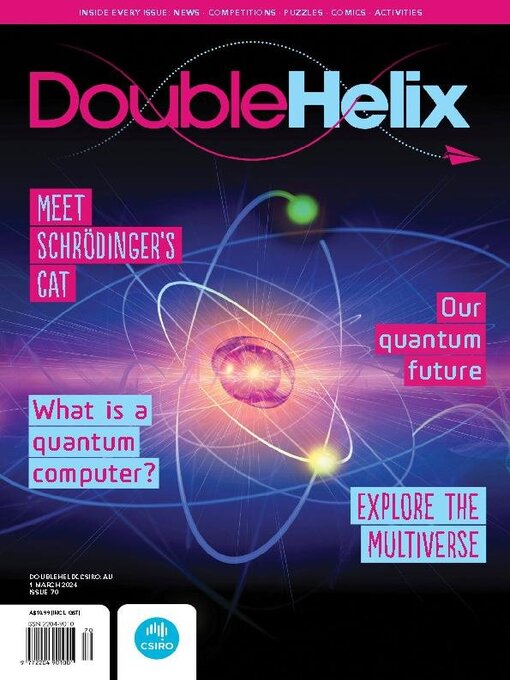
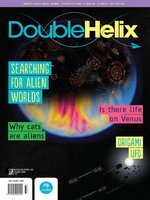 Issue 77
Issue 77
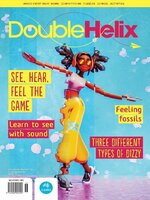 Issue 76
Issue 76
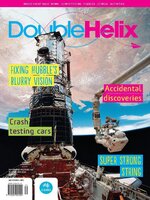 Issue 75
Issue 75
 Issue 74
Issue 74
 Issue 73
Issue 73
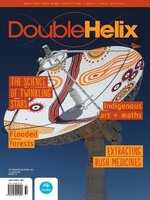 Issue 72
Issue 72
 Issue 71
Issue 71
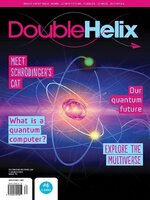 Issue 70
Issue 70
 Issue 69
Issue 69
 Issue 68
Issue 68
 Issue 67
Issue 67
 Issue 66
Issue 66
 Issue 65
Issue 65
 Issue 64
Issue 64
 Issue 63
Issue 63
 Issue 62
Issue 62
 Issue 61
Issue 61
 Issue 60
Issue 60
 Issue 59
Issue 59
 Issue 58
Issue 58
 Issue 57
Issue 57
 Issue 56
Issue 56
 Issue 55
Issue 55
 Issue 54
Issue 54
